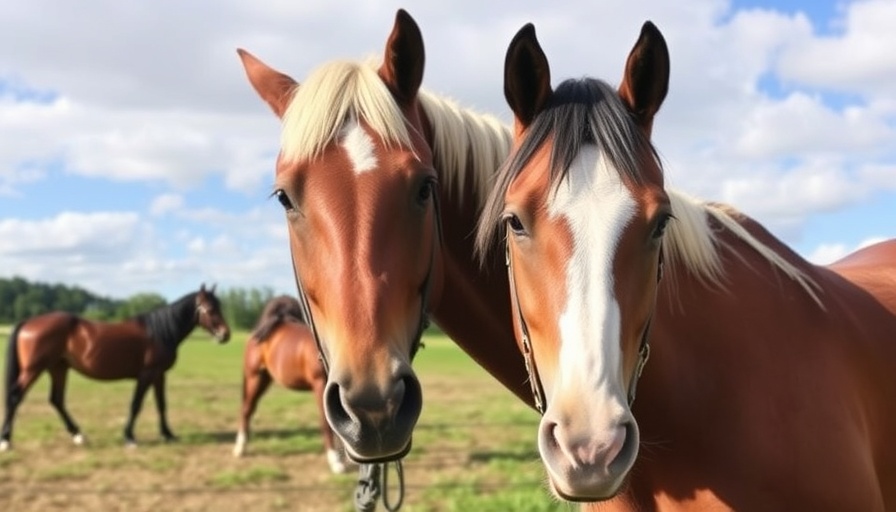
Exploring Equine Therapy for Veterans: A New Hope
In recent years, awareness about the mental health challenges faced by military veterans has surged. Among the conditions that many battle is Post-Traumatic Stress Disorder (PTSD), which affects a significant number of service members. Traditional treatments often include medications and various psychotherapies, but now an intriguing alternative is gaining traction: equine-assisted services (EAS).
The Challenge of PTSD in Veterans
PTSD manifests in veterans through symptoms such as re-experiencing trauma, avoidance behaviors, and a persistent sense of threat. The debilitating nature of this disorder often causes many to shy away from conventional treatments due to stigma or logistical access issues, as noted in recent studies (Provan et al., 2024). With a significant portion of veterans unable to engage with standard therapeutic avenues, EAS provides a promising alternative that mixes therapy, learning, and horsemanship to help ameliorate mental health challenges.
The Role of Horses in Healing
So, how do horses contribute to the healing process? Equine therapy focuses heavily on bonding and communication between the veteran and the horse, fostering non-verbal communication and emotional connection. This unique interaction can lead to profound therapeutic outcomes, with many veterans reporting decreases in symptoms of anxiety and depression post-treatment (Earles et al., 2015). As horses respond to human emotion, they can mirror the feelings of their handlers, giving veterans immediate feedback about their mental state.
Research Findings on Equine-Assisted Services
A recent systematic review aimed at evaluating the effectiveness of EAS for PTSD suggests its promise in alleviating symptoms. The review highlighted various studies that utilized multiple assessment tools such as the PTSD Checklist for DSM-5 (PCL-5). Results indicated a significant reduction in PTSD severity for veterans who participated in EAS, as compared to traditional treatments (Provan et al., 2024).
Barriers to Traditional Treatment
Many veterans find themselves facing barriers when it comes to accessing conventional mental health care. Factors such as cost, stigma, and availability of providers often deter veterans from seeking help. In contrast, EAS may offer a more approachable setting, appealing to veterans who may not resonate with traditional therapy settings. By providing a safe, rural environment for veterans to engage with horses, it creates a less intimidating space for healing.
Looking Ahead: Opportunities for Growth in EAS
The increasing interest in EAS for veterans highlights an essential shift in how mental health challenges can be addressed innovatively. With ongoing research supporting its efficacy, equine-assisted therapy holds the potential to be integrated into broader treatment plans for veterans suffering from PTSD. This evolving field not only shines a light on alternative mental health treatments but also opens up discussions about accessibility and stigma reduction for veterans looking for healing pathways.
The compelling bond forged between human and horse offers a respite from the trauma felt by many veterans. As interest in equine therapy grows, it prompts a crucial question: could embracing these alternative therapies be a pathway that more veterans should explore?
If you're interested in learning more about this innovative approach to healing and what it could mean for veterans and mental health, stay tuned for further updates and research findings. Together, we can pave the way for improved access to mental health resources and support for those who served our country.
 Add Row
Add Row  Add
Add 




 Add Row
Add Row  Add
Add 

Write A Comment